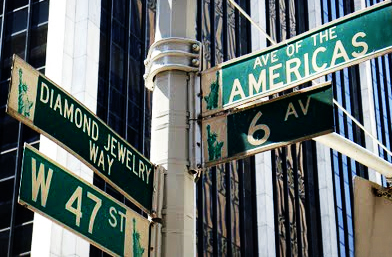Why can’t I sell my ring for what I paid?
By Neil Beaty GG(GIA) ICGA(AGS) NAJA Professional Appraisals in Denver www.gemlab.usNearly everything you buy takes a hit on resale. Diamonds are actually pretty good in that area. Just try and resell a cell phone, computer, a piece of clothing, food or most of anything else you buy. That said, there are few major causes for the difference between buy and sell:
1) Retail. Yes, all of those sales people are paid. Google gets paid. Shippers are paid. Labs are paid. Appraisers are paid. Setters are paid. The free box wasn’t free. Jewelers are doing this for a profit. None of this comes back on resale and I assume none of that comes as a surprise. This is true even if they call themselves wholesalers or some similar term to suggest that they’re cutting out the evil middleman. This is not a bad thing, it’s the way modern economies work.
2) Market access. The REASON jewelers rent all of that expensive real estate, hire those sales people, pay all of those per-click and affiliate marketing fees and so on is because they get higher prices if they do so. Most people don’t have access to that. They sell in what amounts to a distress sale marketplace and their only selling proposition is price. Who is surprised that prices are lower?
3) Obsolescence. How could a million year old rock be obsolete? People don’t care for ‘used’ engagement rings. A used ring simply is not the same thing as a new one any more than a used mattress is the same thing. The mounting component is usually scrap metal when it comes to resale time. Sorry about that. Occasionally people do better but don’t bet on it. There’s also a fashion component. Diamonds are fundamentally a fashion product after all. Marquise cuts, for example, were hot 20 years ago and sold for a premium. Not so much now. It’s not that they’re any less beautiful now than they were when they were new and the stone hasn’t changed. The market did. It’s hard to find buyers now. The dealer is going to have to discount to sell it and so they’re going to discount to buy it. 20 years ago, GIA had no cut grade and AGS’s was completely different. In 20 years the rules will be different again. Bet on it. Hearts and arrows are hot right now. Who knows what will be hot for your grandkids but it’s sure to be different. That’s the way the world works.
4) Condition. Damage is a problem. Sometimes a severe one. Yes, diamonds can chip. ‘nuf said.
5) Misrepresentation. I can’t tell you how many times a client has told me that a stone is D/SI1 because it is ‘certified’ as such. That’s just not the way it goes. There’s misrepresentation on both the buy and sell sides of the deal but I would have to say it’s TYPICAL that it’s not comparing apples to apples.
6) Financing. Normally, new purchases involve a financing arrangement among the dealers called ‘memorandum’. It’s basically a consignment. When customers sell things, they normally want cash with no returns. Not surprisingly, dealers prefer the memo path because it gives them access to a lot more inventory without screwing up their cash flow.
7) Misunderstanding value. This is best described with an example. A consumer buys a ring from a dealer with a diamond for $10,000 (dealer’s cost $8,000) and a mounting for $4,000. Plus tax the deal is $15,400. The dealer issues an appraisal that says it’s ‘worth’ $25k. Bargain, right? Wait for 5 years and then the bride goes to resale after she dumps the guy. She’s got that appraisal in hand. The mounting is scrap metal and the dealer could get a stone like that on consignment from his supplier now for $9k. If he buys this one he’s going to have to tie up his money for an unknown amount of time and he doesn’t have that much cash in the checking account anyway. Jewelers are mostly small businesses after all. He’s going to flip it back to his supplier who will sell it to someone else with the above mentioned memo/consignment system. The supplier is doing this for profit so he’ll give, say $8k for it. The jeweler wants to make money on this deal too so he offers $7k. So now the customer is thinking ‘it was worth $25 Grand 5 years ago, it must be worth more than that now. What’s with the $7k offer? This guy’s a rip-off. Diamonds are a rip-off. I’ve been screwed’. We don’t actually have a clue if the deal is rip-off on either end or not, but the bulk of the problem here is a misunderstanding of BOTH transactions as well as the ‘appraisal’ in the middle.
Neil Beaty is a professional independent jewelry appraiser in the Denver area. He is a frequent contributor to public consumer forums and brings a wealth of information to the industry.






